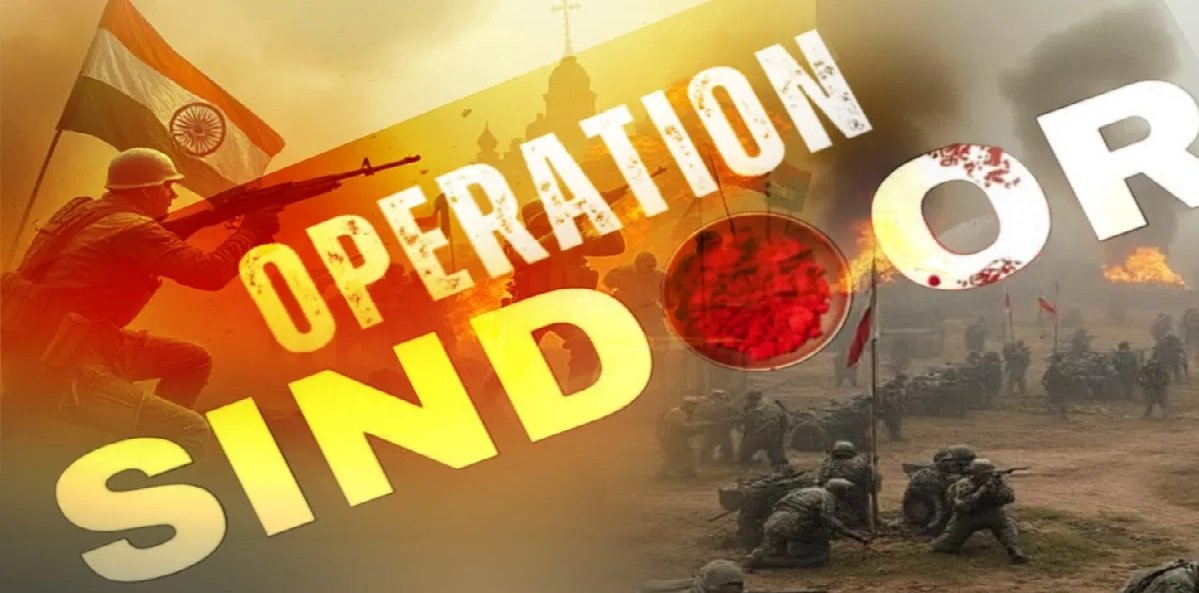The annals of the Indian Army are replete with tales of courage, resilience, and decisive action in the face of adversity. Among these, “Operation Sindoor” stands out as a testament to India’s unwavering commitment to national security and its resolve to respond firmly to acts of terror originating from across its borders. This operation, while perhaps not as widely publicized as some others, holds significant importance in understanding India’s approach to counter-terrorism, particularly in the volatile region of Jammu and Kashmir.
The operation was a direct retaliation for the horrific Pahalgam attack (the trigger for the operation), demonstrating India’s willingness to undertake cross-border operations to neutralize threats emanating from Pakistan, specifically targeting terrorist camps (the targets) within PoK (Pakistan-occupied Kashmir, a location of targets). The execution of Operation Sindoor was characterized by precision strikes, minimizing collateral damage while effectively achieving its military objectives.
The Precursor: The Pahalgam Attack

To fully comprehend the context and significance of Operation Sindoor, it is crucial to delve into the events that precipitated it – the devastating Pahalgam attack. While specific details regarding the exact date and nature of this attack might vary depending on the source and the passage of time, the underlying narrative remains consistent: a brutal act of terrorism targeting innocent lives, likely pilgrims or civilians in the Pahalgam area of Jammu and Kashmir. Such attacks have historically served as catalysts for India to re-evaluate its security posture and consider more assertive measures against the infrastructure of terrorism operating on the other side of the Line of Control (LoC).
Pahalgam, a picturesque valley known for its natural beauty, has unfortunately been a theater of conflict for decades. The targeting of civilians in this region often carries a dual motive: to inflict maximum casualties and to sow fear and discord within the local population, thereby undermining efforts towards peace and normalcy. The Pahalgam attack, whatever its specific details, undoubtedly had a profound impact, galvanizing public opinion and compelling the Indian security establishment to formulate a robust response.
Planning and Nomenclature: Operation Sindoor
It was in this charged atmosphere that the planning for Operation Sindoor commenced. The name itself, “Sindoor,” is laden with cultural significance in India. Vermillion (the meaning of “Sindoor” and its symbolic significance), the powder traditionally applied by married Hindu women, symbolizes auspiciousness, marital status, and protection. While the operational codename might seem incongruous with the military nature of the action, it could be interpreted symbolically as a mark of India’s resolve to protect its land and its people, a powerful statement against those who sought to defile its sanctity.
Objectives and Execution: Targeting Terrorist Camps
The primary objective of Operation Sindoor was clear: to dismantle the infrastructure of terrorism that had facilitated the Pahalgam attack. Intelligence agencies meticulously worked to identify the locations of terrorist camps (the targets) within PoK. These camps served as training grounds, logistical hubs, and launchpads for incursions into Jammu and Kashmir. Neutralizing these facilities was deemed essential to prevent future attacks and to send a strong message to those orchestrating violence from across the border.
Given the sensitive nature of operating across the LoC, the planning for Operation Sindoor would have involved intricate details, focusing heavily on achieving surprise and minimizing risks to the Indian Army personnel involved. The emphasis on precision strikes was paramount. Unlike conventional military engagements, cross-border counter-terrorism operations often prioritize surgical accuracy to avoid civilian casualties in the targeted territory and to limit the potential for escalation. This would have likely involved the use of specialized forces, advanced surveillance technology, and meticulously planned ingress and egress routes.
Strategic Implications: Cross-Border Retaliation and Counter-Terrorism
The decision to undertake a cross-border operation is never taken lightly. It involves a careful assessment of the strategic implications, the potential for international repercussions, and the military capabilities required. In the context of Operation Sindoor, the perceived failure of other measures to deter cross-border terrorism likely necessitated this more assertive approach. The operation signaled a shift towards a more proactive stance in dealing with the threat emanating from Pakistan‘s territory.
The element of retaliation was undoubtedly a significant factor driving Operation Sindoor. The Pahalgam attack was seen as a direct provocation, demanding a forceful response to restore deterrence and to reassure the Indian populace that such acts would not go unpunished. This retaliatory action aimed not only to neutralize immediate threats but also to dissuade future acts of terror by demonstrating India’s capability and willingness to strike at the source.
Operation Sindoor, therefore, was a multifaceted military operation that went beyond simply inflicting damage. It was a strategic move within the broader framework of counter-terrorism. By targeting terrorist infrastructure in PoK, the operation aimed to disrupt the cycle of violence, degrade the capabilities of militant groups, and create a more secure environment in Jammu and Kashmir.
Outcomes and Geopolitical Context

The success of Operation Sindoor would have been measured by several factors: the extent of damage inflicted on the targeted terrorist camps, the number of terrorists neutralized, the intelligence gained from the operation, and the overall impact on the flow of militants across the LoC. While specific details of these outcomes might remain classified, the very execution of such an operation sends a powerful message.
The geopolitical context surrounding Operation Sindoor is also crucial to consider. Relations between India and Pakistan have historically been fraught with tension, particularly concerning the issue of Kashmir. Cross-border military actions carry the risk of escalating these tensions. Therefore, the decision to launch Operation Sindoor would have involved a careful calculation of the potential for escalation and diplomatic repercussions. India would have likely aimed to convey that the operation was a targeted response to terrorism and not a broader act of aggression against Pakistan.
Furthermore, the international community’s perception of such operations is also significant. India would have likely sought to frame its actions as a legitimate exercise of its right to self-defense against terrorism, particularly after a heinous attack like the one in Pahalgam.
Conclusion
In conclusion, Operation Sindoor represents a significant chapter in India’s fight against cross-border terrorism. Triggered by the tragic Pahalgam attack, it was a military operation characterized by the Indian Army‘s resolve to undertake a cross-border operation targeting terrorist camps in PoK. The emphasis on precision strikes underscored the intent to minimize collateral damage while achieving the strategic goal of retaliation and disruption of terrorist infrastructure. Operation Sindoor stands as a testament to India’s commitment to counter-terrorism and its willingness to take decisive action to protect its security interests in Jammu and Kashmir.
The symbolic undertones of its name, referencing vermillion, might be seen as representing India’s determination to safeguard its integrity and respond firmly to those who threaten it. While the specifics of the operation might remain largely within the realm of strategic and military confidentiality, its underlying message of resolve and action resonates within the broader narrative of India’s security challenges in the region.
Read More.https://magazinesmore.com/indias-decisive-strike-against-terror/










